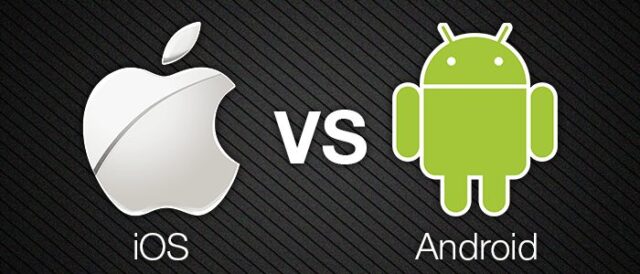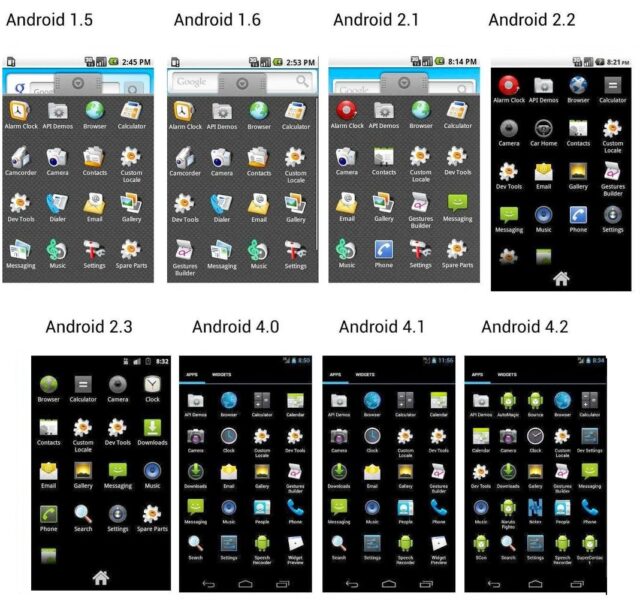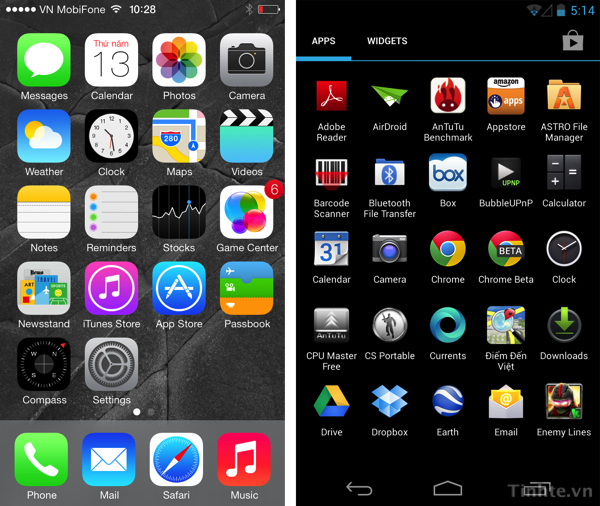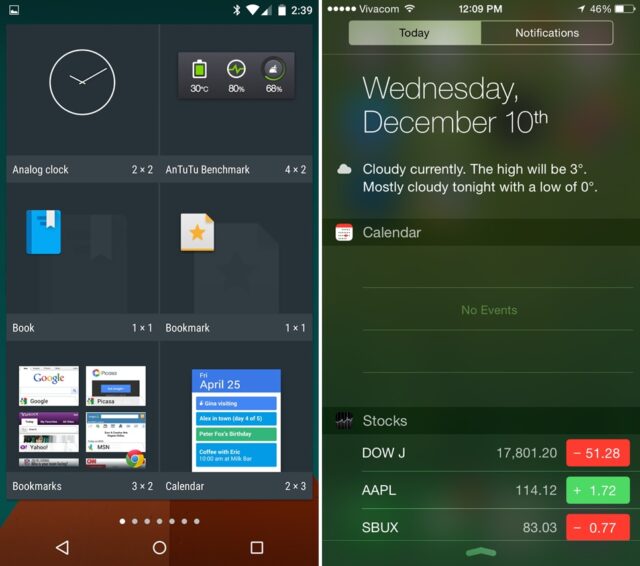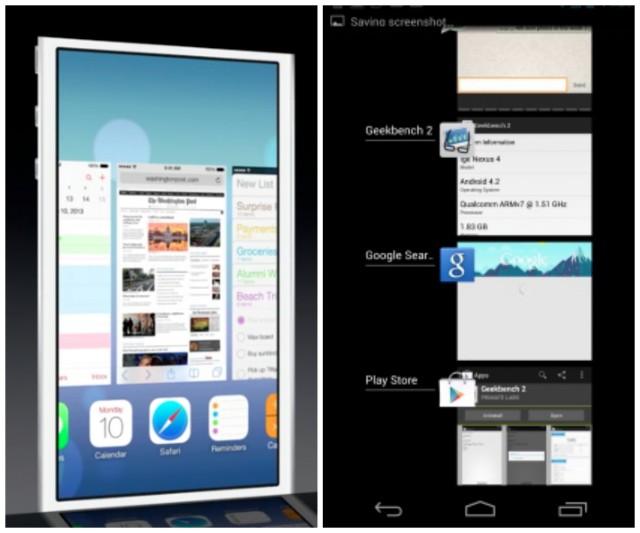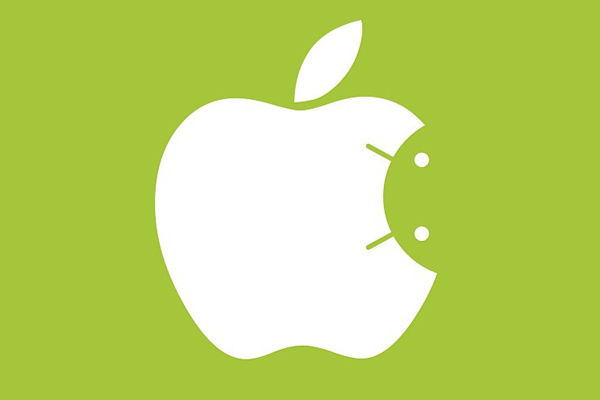
An Android vs iOS battle is something worth talking about with anyone who uses smartphones today. You can see that discussion on almost every mobile forum or every internet location with the theme of mobile phones. But how those mobile operating system appeared? And what is actually the difference between them? To find out all of that just keep reading.
Both operating systems have a pretty good arguments to choose them. And you can find both platforms on smartphones, smartwatches, TV’s, gadgets, even cars in some places. But what can both platforms offer? Before I start listing all the stuff about what both platforms can do I think that it is good to know when those systems first appeared and how they developed over all those years.
Brief history of Android
So, let’s start with Android. Everything started back in 20013 when some guys named Andy Rubin, Rich Miner, Nick Sears and Chris White started a company named Android Inc. Company wasn’t very popular back then. Yes, it developed quite fast but it became known worldwide when Google bought it in 2005.
In 2007 OHA was started (Open Handset Alliance) and Android appeared for the first time. Its basic coding was based on open source code and it was meant for future smartphones. In November of the same year we got Android Beta SDK (Software Development Kit).
And just a year later Android 1.0 was released. It was made for HTC Dream device. In February of 2009 Android 1.1 came and it fixed a lot of known bugs and added some more features.
Another version was released just a few months later. It was named Android 1.5 with the name Cupcake. That version also brought a lot of improvements with the most notable one – virtual keyboard. Virtual keyboard offered smartphones a possibility to remove physical keyboard.
Android 1.6 was released in November of the same year and brought some new features like voice search, turn-by-turn navigation and similar stuff.
Just a month later Android stepped into 2.0. world. Android 2.0. with a codename Éclair got an improved interface, better accounts management, better camera app and lots of other great features. In 2010 Google released another version of Android codenamed FroYo (Frozen Yogurt) with the number 2.2. Main features were keyboard that supported more languages, more camera options, better Bluetooth and lot more. One of the most popular versions, called Gingerbread (Android 2.3.) came in December of 2010. User interface was improved, just like virtual keyboard, better copy-paste, internet calling, NFC support and some other great features.
In February of the next year Android got a 3x version codenamed Honeycomb. Versions from 3x line supported 2D and 3D graphics, support for Bluetooth and USB keyboards, support for more CPU cores and lot more. And those versions were mainly made for tablet devices.
In October of the same year a 4.0. version came, called Ice Cream Sandwich. This version was made for all devices and it got better user interface, better applications, facelock features and much more.
In July 2012 Android took over market advantage from iOS. That advantage came because of a new version called Jelly Bean with number 4.1. That new version brought a large number of innovative and better features. In the next year or so we got a 4.2. and 4.3. version with the same name and much more new features and improved performance.
Android 4.4. with codename Kit Kat got some great new features and 64-bit processing. And few months ago Google released Android 5.0. It is still pretty new and we are waiting to hear more reactions to it.
Brief history of iOS
Now on to the iOS. The first iOS operating system was released in January 2007. Back then no one expected that it would be something special. First iPhone with iOS didn’t have the support for 3G, didn’t offer the options for copy and paste, didn’t support email and MMS and you even couldn’t install 3rd party apps. Certainly didn’t sound good at the beginning.
But when iPhone 3G was launched a new operating system was released, and it was much better. This new one supported 3rd party apps and lots of other features.
iOS 3 came when Apple released their new 3GS phone. This version included the support for copy and space, video recording, MMS, voice control and lots of other features. New updates for this version included some improvements with the design and user interface itself.
In 2010 we got iOS 4. I forgot to mention that all of the first three systems didn’t have the name iOS. They were actually called Apple OS and the fourth version of Apple OS got the name iOS. It was released in iPhone 4 and got some of pretty great new features and increased performance of existing features and functions.
Just one year later iPhone 4S was launched and it had iOS 5. A new iOS had Siri, virtual assistant with voice recognition feature. iOS 5 also offered about 200 new and improved features and really caused a lot of happiness with iOS lovers.
In 2012 Apple released iOS 6. One of the most notable things about iOS 6 was the decision from Apple to remove Google Maps from their operating system. Facebook was integrated into OS and Siri got some new improvements.
The main change of iOS 7 compared with its predecessors was its design and better user interface. It also got some very notable new features and its complete performance was increased.
On 2014 WWDC Apple presented iOS 8. It had features like HealthKit and HomeKit which were meant to help Apple users with their personal help and to control their home security directly from phone.
iOS 9 was released this year. It got some great new features, better lifetime of battery, improved Siri, more user friendly font and keyboard and much more.
If you want to find out more about the complete history of iOS read my article – iOS Evolution.
Android vs iOS battle
To tell you who won this battle I will divide the “fields” into six different categories: user interface, widgets and notifications, camera, software updates, security and multitasking. So, let’s get to work.
User interface
Along with iOS 7 new design and new user interface Apple applied flat design to it. Flat design is minimalistic and with that design Apple removed everything that wasn’t necessary in that user interface. Almost all the new apps for iOS have a flat design. Google didn’t want to apply a flat design to their Android OS until they released Android Lollipop 5.0. Android apps also got a new design, more animations and they are cleaner and simpler. Still, Android didn’t get everything right just yet so we have to say that Apple iOS is still more effective with their user interface. That could change in the future.
Widgets and notifications
Android is dominating largely on this field. Android was the first OS to get a menu with notifications that pulls from the top of the screen. You can also add widgets in the options menu. Widgets with Android are also very easy to make. The same thing stands for notifications. Android have a lot more options to edit and work with.
Widgets are finally available on iOS too. But they are not visible right away after you pull the widget bar from the top. Notifications are also a little step behind Android and Apple will have to work a lot on these two fields if they want to beat Android.
Security
Apple is controlling everything. They look out for everything that comes into their stores even before it comes there. Apple iOS has a large number of security options, including fingerprint scanner. Android is getting that too so we could say that Android is reaching iOS with security options. But, Android has a lot of more malwares and it is much less safe than iOS, especially if you are using applications that are not from Google Play Store.
Multitasking
Google multitasking will show you your cards one above the other and you can list them to get to the one you want. All apps have a different colors and cards have the name of application on it so it is easy to notice them.
On the other hand, with iOS you have to click on multitasking menu and then you get all the open applications right next to each other. You can see the whole screen of every card and you can even read what is on them without opening it. You can turn of the applications by pulling them up. If you have large number of applications it will take you a while to scroll through all of them but Apple still offers a little better and simpler access to multitasking.
Camera
When we look at the simplicity, quality and the speed of the user interface of the camera then the winner is obvious and it is iOS. Apple iOS offers a quick camera activation, very easy photographing or recording and lots of options. You have to use original Apple camera app but you can use lots of other camera applications on AppStore if you need more options.
And then we have Android camera where user interface is destroyed. Also, lots of Android manufacturers don’t focus on building a great camera and Sony or Samsung are the only logical options if you need a good camera. And if you go to Google Play Store then you can find lots of different apps for editing and taking photos on Android phone.
Software updates
This one is really obvious and no one can say that Android is better than iOS on this field. Let’s just take a look at the number of users on the newest platforms. I don’t know the exact number but over 80% of users use iOS 8 and over 40% users are already on iOS 9. If you have Apple then you don’t have to wait for the new OS version. When it is released you can upgrade your system immediately, if you want to. On the other hand, only about 10% of Android users use Lollipop. Some users have to wait for a few months after the new Android OS is released to get it.
So, now should be the time for some conclusion, right? If we look at everything I mentioned above then iOS is the obvious winner. There are many reasons for it like security, software updates, security, camera, better interaction with other Apple devices and some other stuff. But, I think that the main thing that should decide this battle is your personal choice. If you really want iOS then take it and don’t bother about what people say. And if you want Android then take it and you will probably be happy. To check some of the statistics about both operating systems check the Android vs iOS infographic below. Good luck!

